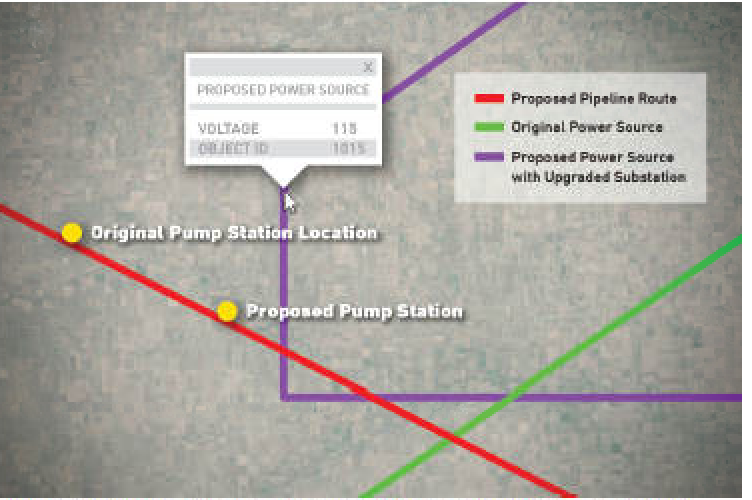August 2017, Vol. 244, No. 8
Features
Pipeline Survey Offers Electrical Solutions to Save Millions

During route selection for an interstate pipeline, surveyors must consider an array of factors that affect the feasibility and cost of constructing the pipeline, including wetlands, bodies of water, property boundaries and roads. Another that should also be considered in electricity.
For one recent pipeline survey and design project completed by Shafer, Kline & Warren (SKW), reassessing the location and quantity of pump stations on the proposed route meant saving the midstream company $100 million on the construction of the pipeline.
“When building a pipeline, it’s not uncommon for companies to invest a significant amount of money to get electricity to a site,” said SKW Vice President of Field Services Tim “T.J.” Johannes. “Still, there is no reason to spend more than necessary on electricity, which means not just considering what is the best route for the pipe, but also looking at how to route for the best access to power.”
Johannes said the original pipeline proposal included five pump stations along the 565-mile route. By collaborating with SKW’s electrical engineering and pipeline design departments on a power availability study during the preliminary route phase, Johannes was able to identify route adjustments that added 3,000 feet of pipe, allowing for the design team to increase the size of the pump stations while reducing the number of pump stations from five to four.
The change moved the pump stations closer to power sources and reduced the cost of getting power to the stations from $125 million to $12 million. Though there was an increased cost with the size of the pump stations and additional length of pipe, the change would save the pipeline company about $100 million after the added expenses.
“As a company, we leverage our vast experience and institutional knowledge of survey and design,” Johannes said. “We look at all the pieces of the puzzle before we put it together. You don’t want to do a 500-piece puzzle and discover you only have 499 pieces. That’s when you discover that you have to spend millions of dollars that is not in the budget to fix the missing piece at the last minute.”
Johannes said that it is not enough to look at the location of power and substations, but one must also consider the current load being drawn from the substations and future planned power lines.
“Too often, power is an afterthought,” Johannes said. “Many companies wait until they are designing the pump station much later in the process before deciding how they are going to get power to it. Instead, we incorporated the findings of our electrical engineers’ power availability study into our solutions.”
One option for companies that locate pump stations at sites where power is inaccessible or expensive is to use a large diesel generator to power the pump stations. However, the purchase of diesel fuel throughout the lifetime of the pump station can be expensive and fluctuates with the market price of fuel.
“During our assessment, we look at the GIS data from the power companies and contact them to find out about current loads and future expansion projects,” Johannes said. “We found a couple of sites during this project where they were in the process of building new power lines. This enabled the midstream company building the pipeline to pay for the upgrades to the power line rather than running a whole new line or paying for a new substation.”
Through its work with pipeline survey and construction, SKW estimates the cost to construct a new power line with the voltage to power a pump station to be about $1 million per mile.
“There is a lot of pressure on companies to optimize efficiency and reduce costs,” Johannes said. “Even if we are only completing the survey for the project, we think about the project in a holistic way and consider the design and engineering that will go into it. We approach projects this way from day one.”





Comments